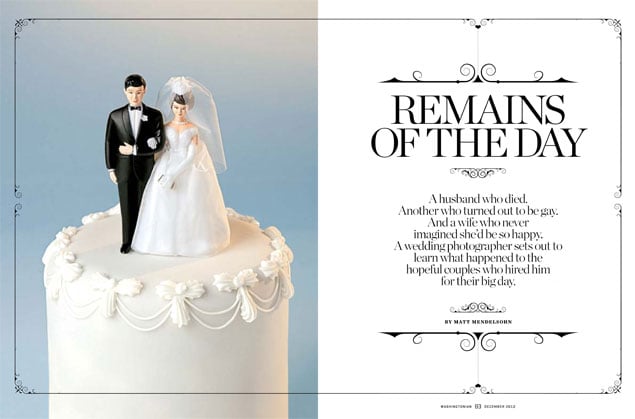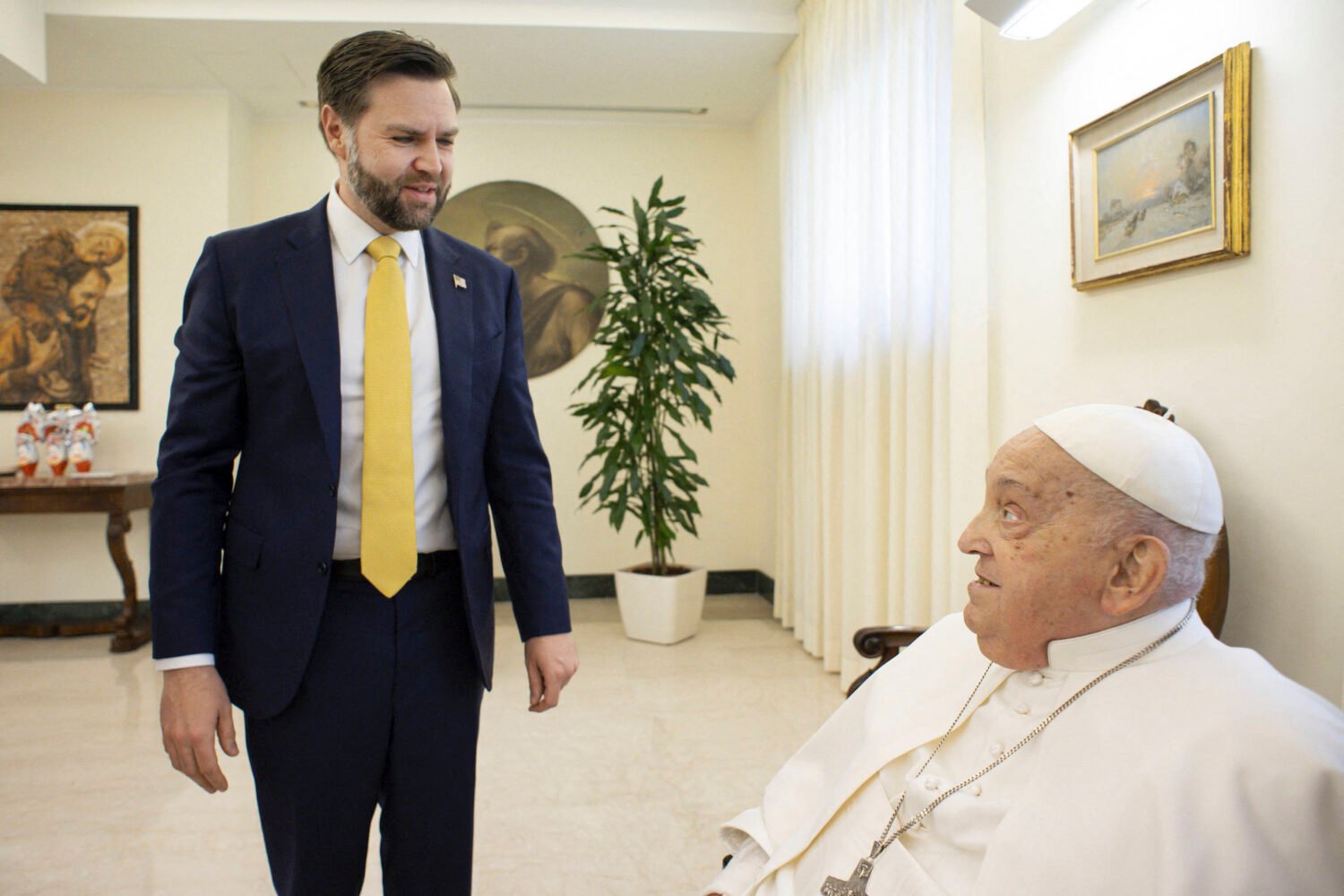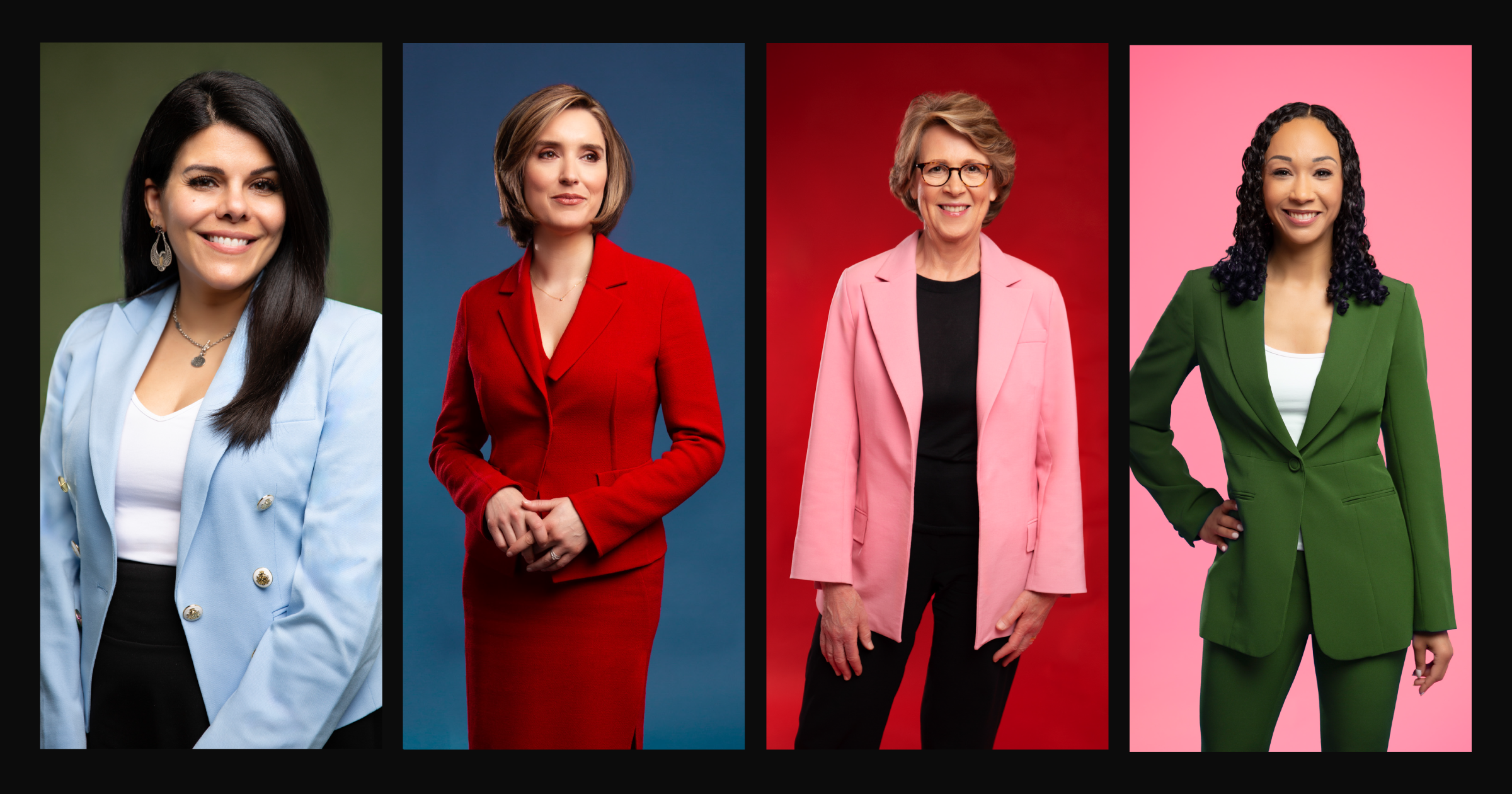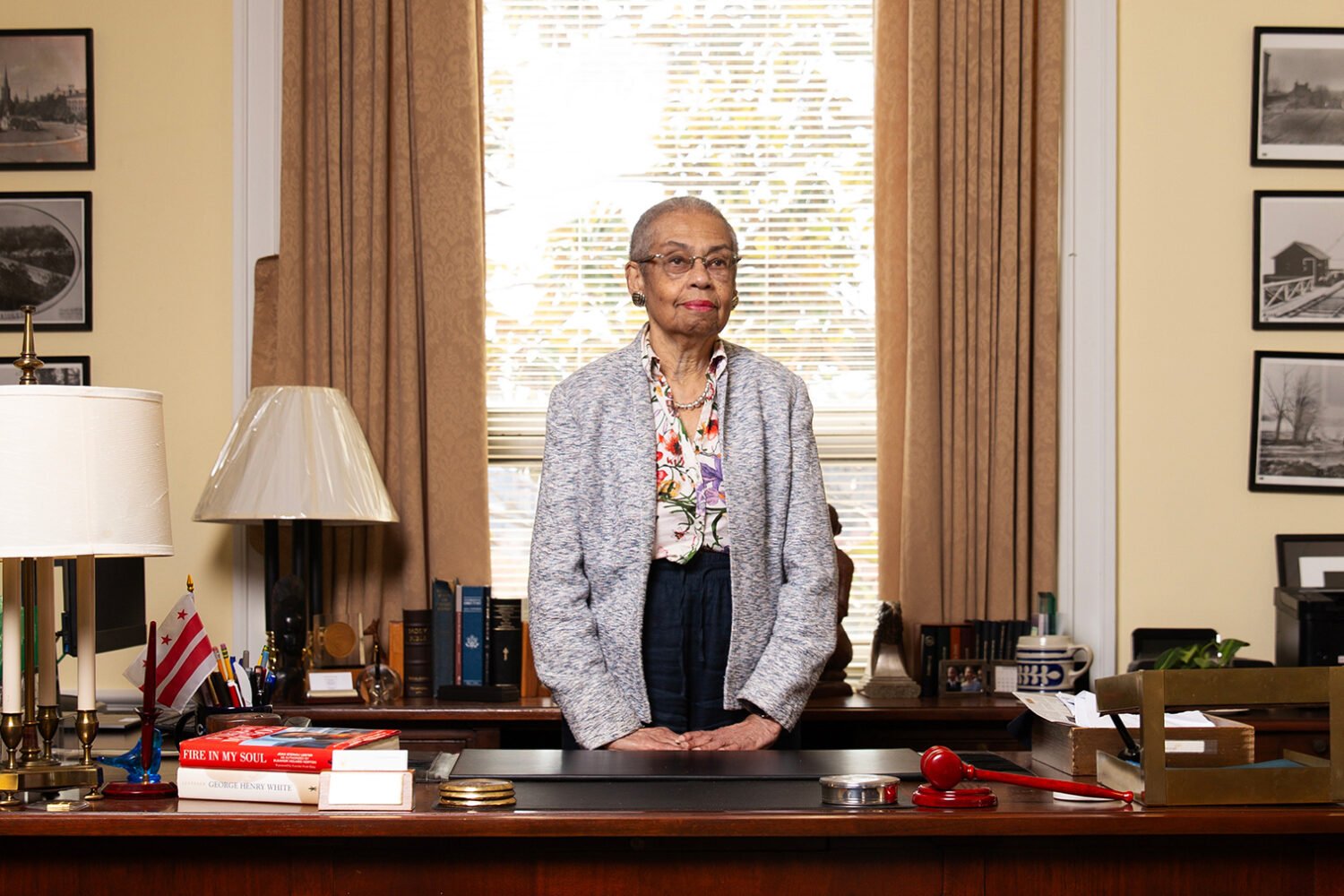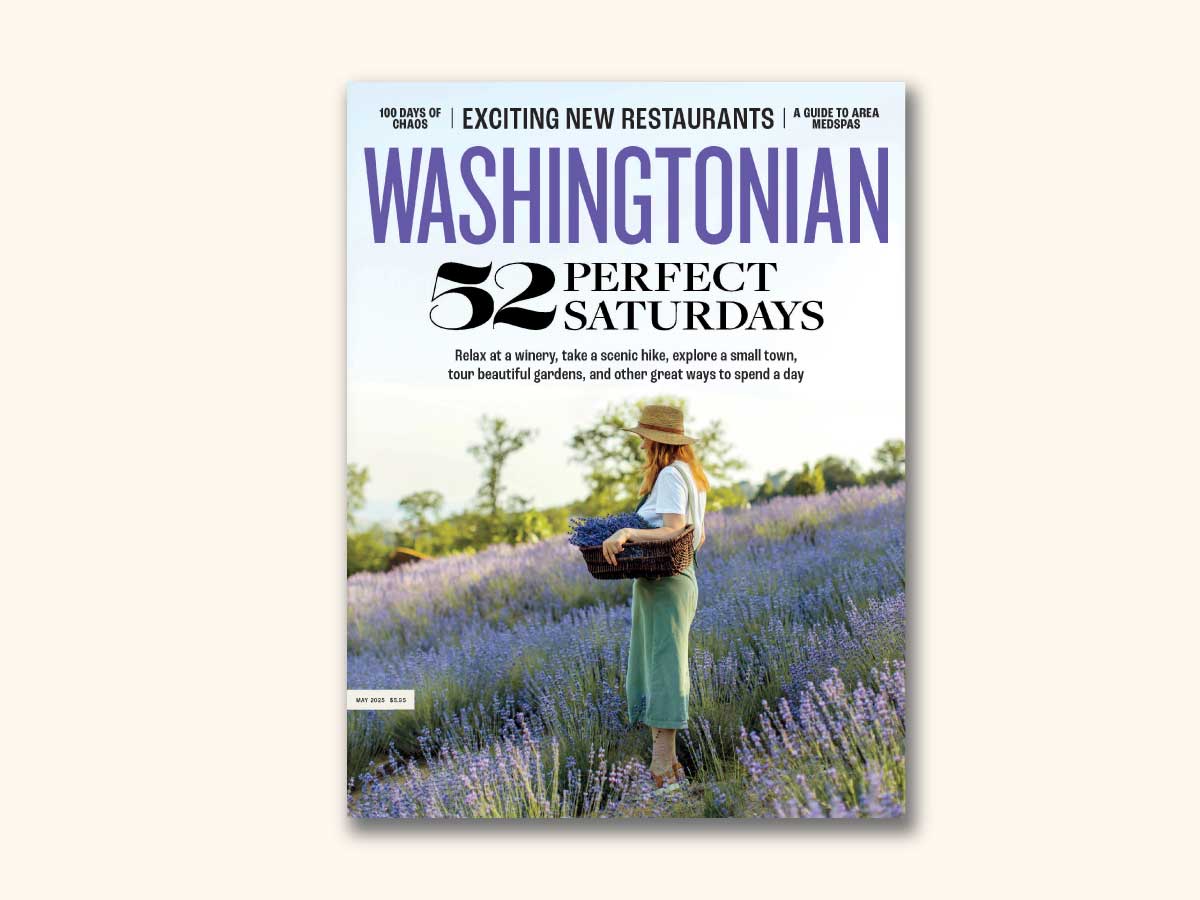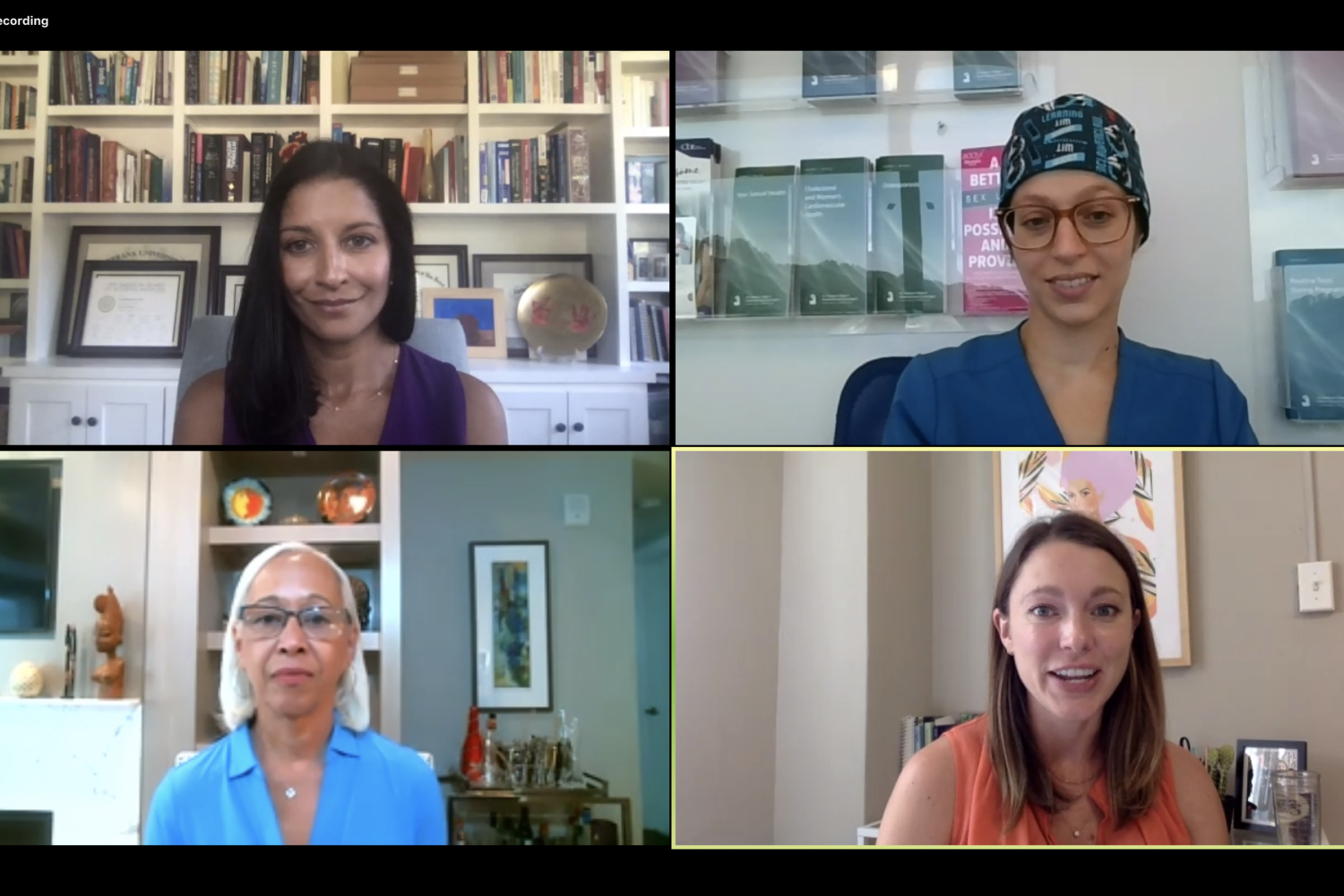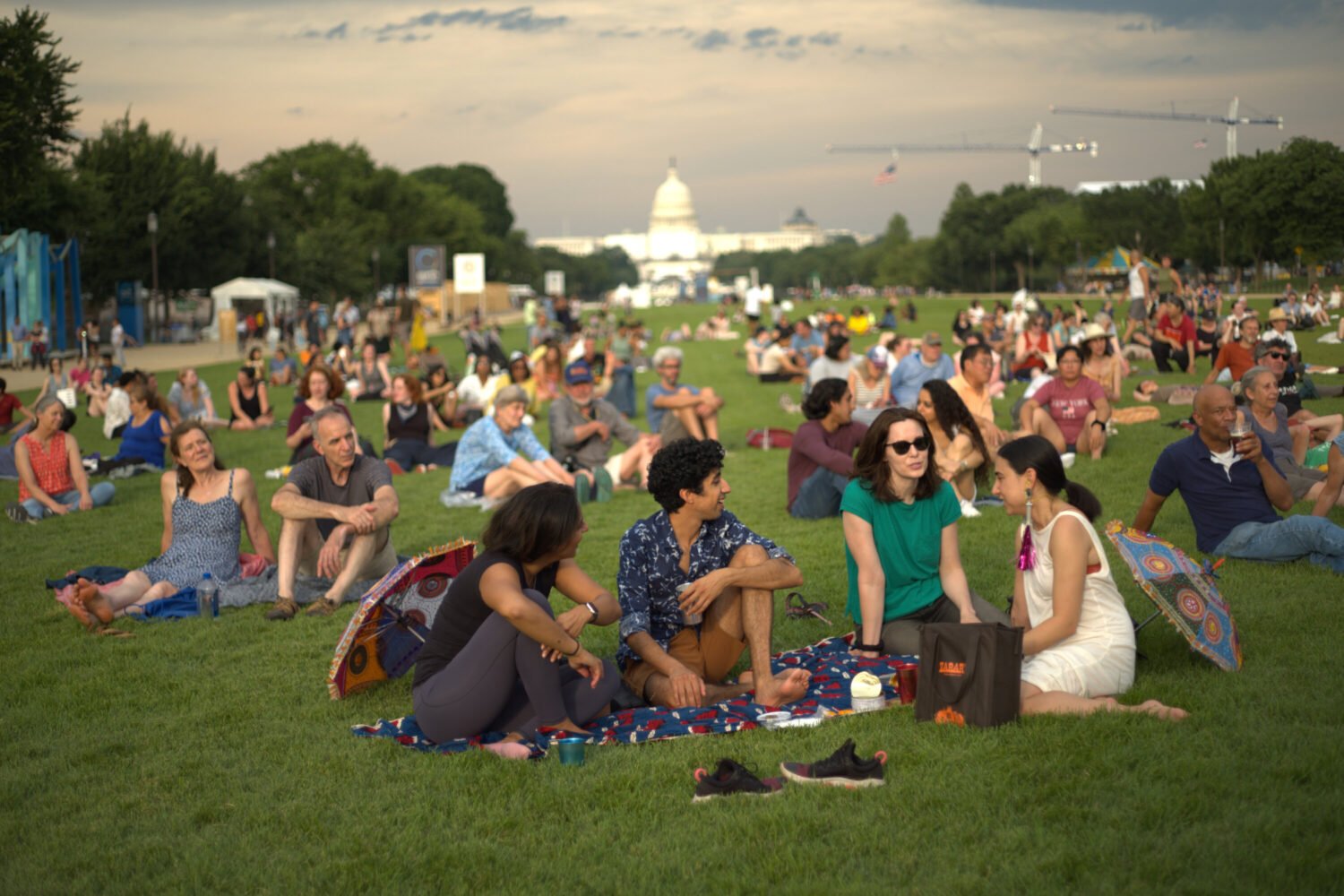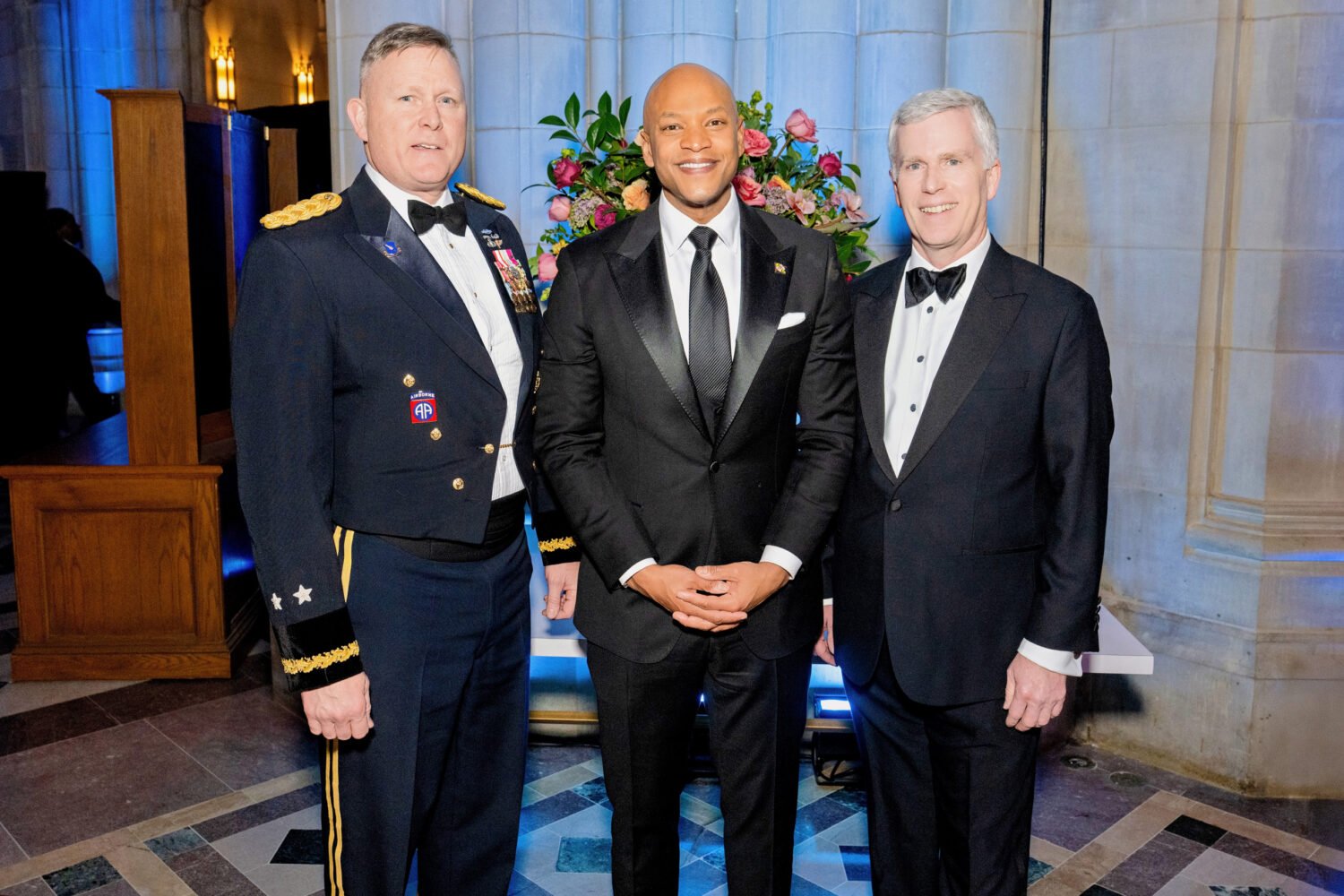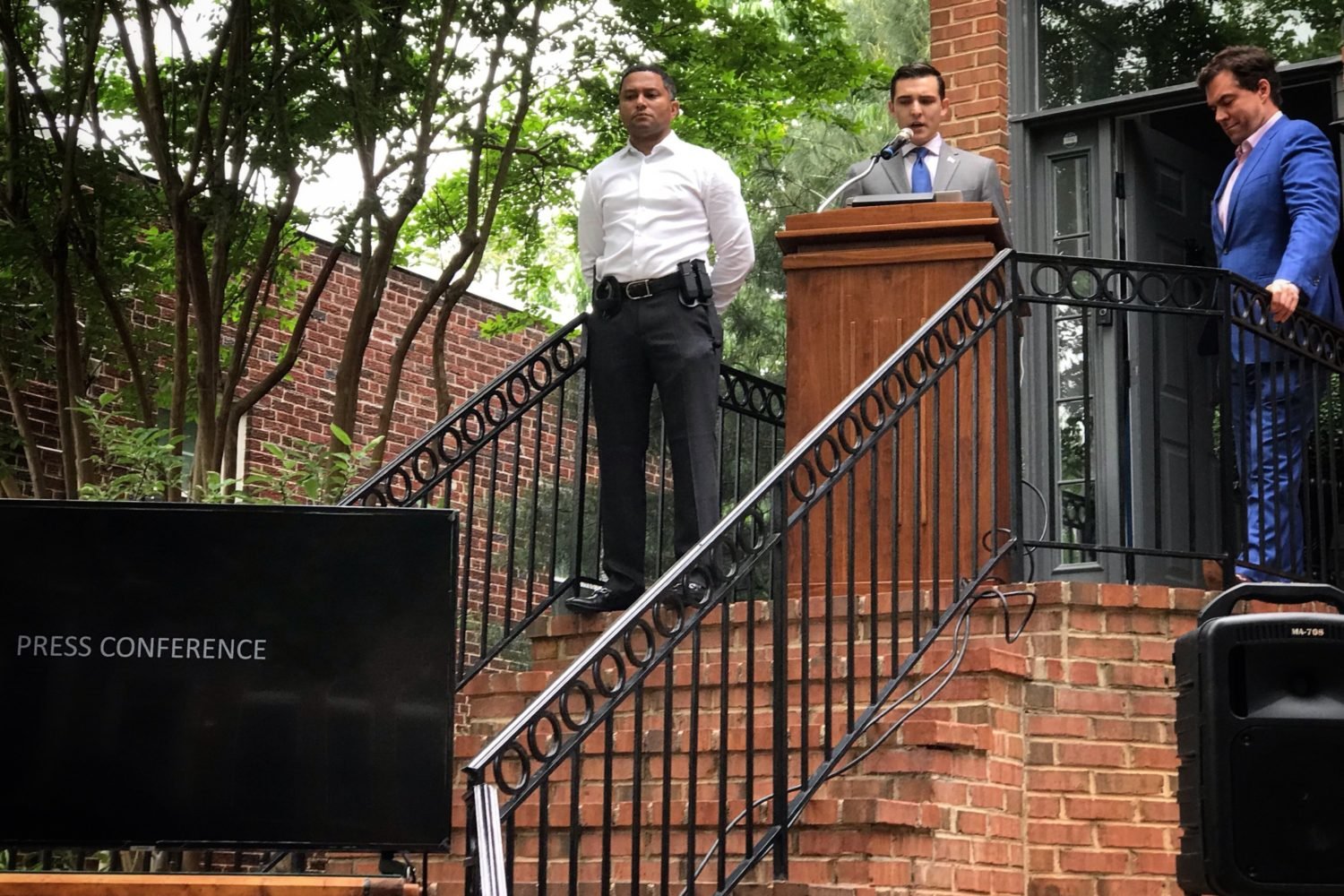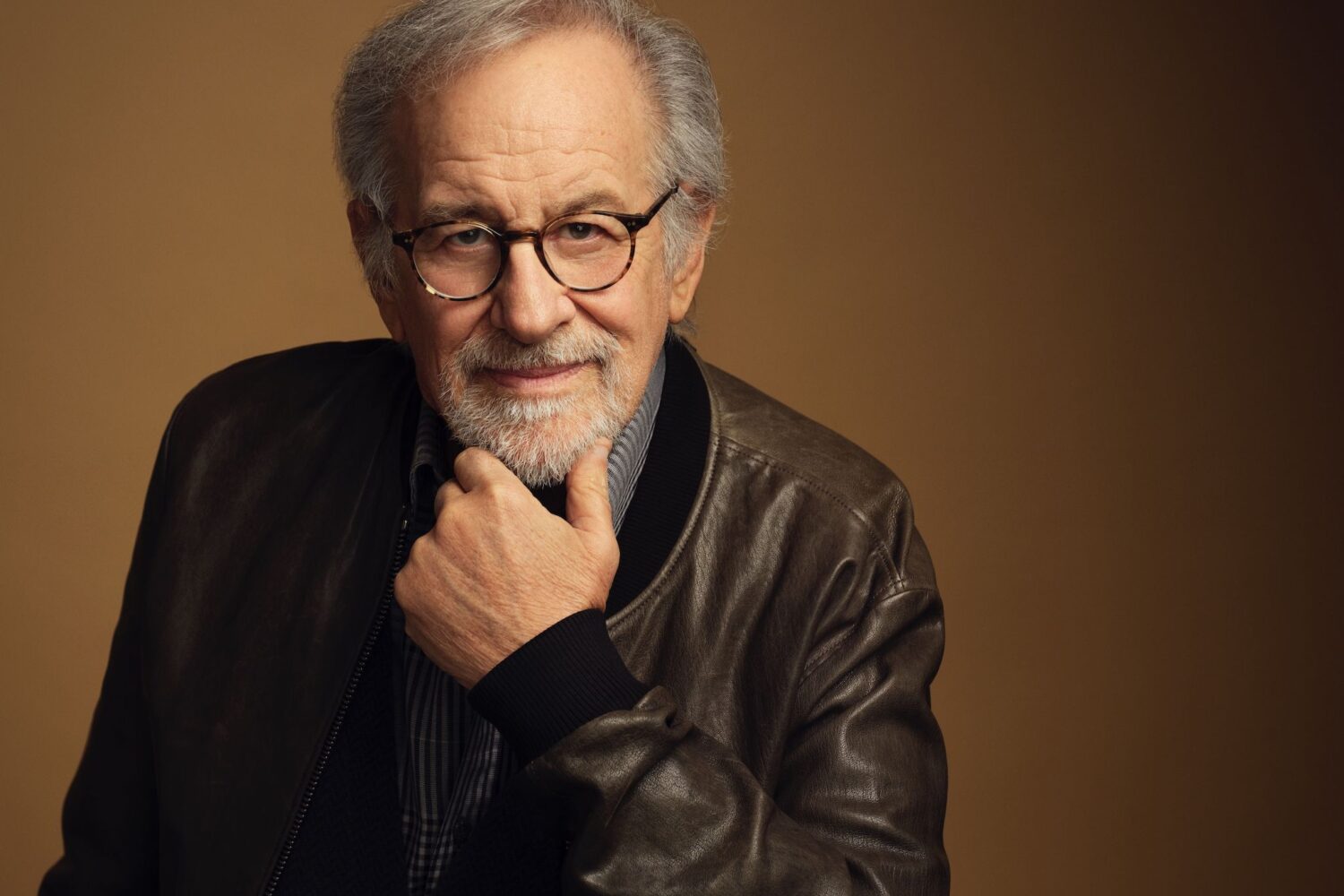K Street was deserted at 8 on a Sunday morning, as you would expect it to be, and as my car idled at a red light, I looked over at the tiny cooler on the passenger seat containing an even tinier plastic bottle. Nuzzled up against a blue ice pack, the bottle looked empty. But when I held it up and tapped it in the morning sun, tiny drops of breast milk clinging to the sides popped into focus.
It was April 18, 2010.
For a moment, I thought about the oddness of the situation. I wasn’t the father of the two-day-old infant tethered to wires and tubes in a room at Children’s National Medical Center, the one for whom I was transporting these droplets of milk—a child who in just two months would already bear the scars of open-heart surgery. Nor was I married to the woman I had just left behind at Sibley Hospital, who was unable to join her newborn as she recovered from a C-section. I wasn’t even distant family.
I was just the wedding photographer.
But the light changed and I drove on, completing the six-mile trip between the two hospitals and delivering my cooler to the nurses’ station at Children’s. What had started that morning as a routine job, photographing the birth of Cree Jordan Valcourt Pearce, son of Catherine Valcourt and Larry Pearce—whose wedding I had photographed on September, 8, 2001—was ending in a much different fashion.
I walked into Cree’s room and stood over him. He was sleeping, wrapped in a white hospital blanket with pale blue and red stripes. There were no doctors or nurses, no crying, just the occasional beep of a monitor.
I knew Cat and Larry would want some reassurance, but calling them wasn’t practical—Larry is deaf, Cat half deaf. So, ignoring the gear I’d brought to shoot a happy family portrait back at hospital number one, I reached into my pocket, grabbed my phone, and took three quick, grainy pictures of the baby. “Mission accomplished,” I texted Cat, accompanied by a smiley face and a photo, then drove home.
But something lingered beyond the time it took to take that fuzzy iPhone picture, more than just another one-125th of a second to a photographer whose life has been full of them. One-125th of a second is all it takes to make a photograph of a bride signing her marriage vows—“You make me crazy and you make me laugh, normally at the same time”—or of a mother kissing her child before handing him off to a surgical team. It’s the time in which it’s possible to capture the laughter of a groom during the best man’s toast or of a family, ten years after that toast, chocolate running down children’s faces.
And for me, a blink of an eye as I stood over this child in a hospital room was all the time I needed to realize I wasn’t so much interested in wedding photography as I was in wedding anthropology.
I began to wonder about the other brides and grooms whose weddings I had shot. Were they facing the same kinds of challenges as Cat and Larry? Were they still married? Wedding photographers tend to assume we have the best clients—impervious to things like divorce and disease. But despite the unending blog posts by photographers about the “honor” of shooting so-and-so’s nuptials, we know about as much about our clients as they do about us.
Which is another way of saying not much.
By the time I photographed Cat and Larry’s wedding at Woodend—the Chevy Chase home of the Audubon Naturalist Society—in September 2001, I had already shot 115 affairs. Since then, I’ve done 335 more. In all, 451 couples spread out over 14 years. Flipping back through a particular year’s desk diary—I’ve kept them all—I see one unifying bond: the word CONFIRMED! scrawled in Sharpie over each wedding date.
When she tells me she hasn’t looked at her wedding album in probably seven years, I’m reminded of how fleeting it all can be.
![]()
A couple stands under a wrought-iron chuppah. A bride clutches a photograph of her mother. A blizzard wreaks havoc on a wedding. I remember them all.
The farther back I go, the more likely the memory takes the form of an actual photograph. Like this: On September 9, 2000—a year before Cat Valcourt and Larry Pearce were married—a bride is putting on earrings. The light by the front door is beautiful. On June 24 of the same year: A couple parades through Georgetown with a New Orleans jazz band. The first week of that June: A bride dresses herself. She has no attendants.
Back one year still, on October 10, 1999, Stephanie Roma and Stewart Brown got married inside the tiny, historic St. Ignatius church in Oxon Hill.
If I close my eyes, I get: French cuffs.
That’s mostly what I recall. Stephanie wore a dress with French cuffs, the only one I’ve ever seen. Is it my memory telling me this or the fact that every once in a blue moon, while searching for some file on a backup drive, I might skim past something called “0289_Roma_99.jpg,” a digital scan of a print showing a woman with a broad smile sitting in a big wooden chair on a church altar, French cuffs adorning the sleeves of her wedding dress?
Stephanie and I met recently at a Mexican restaurant in Ballston, and though we’ve kept in touch over the years—I photographed both of her pregnancies—it’s the first time we’ve discussed life after her wedding. She, of course, remembers the dress with the cuffs, the rain that morning, her giggly vows.
But when she tells me she hasn’t looked at her wedding album in probably seven years, I’m reminded of how fleeting it all can be. The bridal industrial complex, in which I’ve been a cog for 14 years, desperately wants couples to believe that it’s all about Your Day!—the emphasis firmly on the “your” part—that if you throw enough fondant and tulle and calla lilies at one eight-hour event, newlyweds might forget about the 438,000 hours yet to come.
Wedding photographers now spend almost as much time shooting pictures of things like hors d’oeuvres, place cards, and rings—“details,” they’re called, a deliciously ironic term—as they do the bride and groom, the meaningless detail shots only masking the fact that there are precious few real details yet.
So much energy for just one day, one blip on a graph that will go on for years, decades, half centuries. Or not. Go to enough weddings and you realize that photographing one is like photographing the coin toss before a football game: Nothing’s actually happened yet. Cat Valcourt had no special wedding-day insight into what her future held, no inkling that 11 years later her Facebook statuses might toggle between “My Cree rolled over!!” and “God and I are no longer on speaking terms.” Nor did any of the others: the couple under the wrought-iron chuppah, the bride clutching her mother’s photograph, or the one who asked me to zip her up because no one else was there to help.
I’m telling you this now because there’s one detail Stephanie Roma can’t forget, though it came long after her wedding. It was March 3, 2008, a day after she discovered her husband, Stewart, disoriented in the bathroom with what would be diagnosed as a brain aneurysm.
No longer giggling on a tiny church altar, the pair was sitting in a room at Washington Hospital Center going over routine preop questions, the calm before 14 hours of surgery the next morning. And in this calm, one tiny detail bubbled to the surface.
“Do you do drugs?” Stewart was asked.
No.
“Do you drink?”
No.
“Do you smoke?”
This time he chimed in: “A pack, pack and a half a day.”
Remembering this, Stephanie—who had been married to Stewart for 8½ years at this point—looks at me and, over the muffled chatter of people enjoying frozen margaritas in the Mexican restaurant where we’re sitting, says: “I didn’t know that.”
Stewart would survive the aneurysm, but their marriage was beginning to flatline.
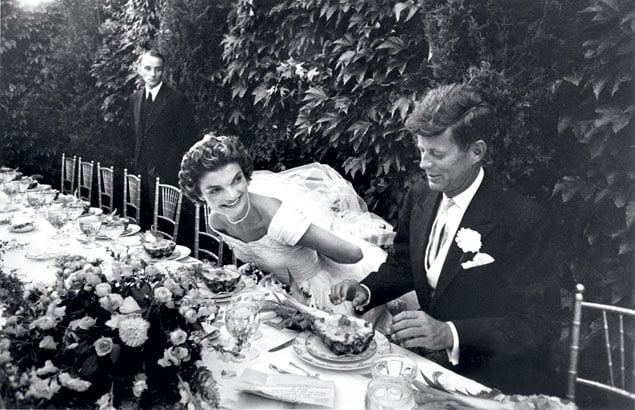
Jesus, as wedding photographers are reminded each week, performed his first miracle at a wedding in Cana. Of course, there’s no photographic evidence. Probably for the best. Had there been a photographer that day in Galilee, the world might today be looking at a picture of a bride and groom posed sexily in some ox cart, lit from behind by a strobe hidden in the hay, holding balloons while drinking wine out of Mason jars and gazing adoringly at each other.
That’s the current state of the art.
It’s no longer enough to take wedding pictures that show a bride and groom in love—dancing, whispering during dinner, playing with a nephew or niece. These days, wedding pictures are elaborate, photographer-contrived setups that show the newlyweds kissing in a wheat field (as if it were a natural act to go wheat-harvesting on one’s wedding day) or aboard an old-time fire engine.
Weddings date back as far as civilization—it’s photography that’s had to play catch-up. In 1839, Louis Daguerre’s process of coating copper plates with iodized silver was announced to the world by the French Academy of Sciences. The next year, across the channel, Queen Victoria married her first cousin, Prince Albert. And if history tells us anything about that wedding, it’s that the bride wore white. As details go, it’s an important one.
Wedding pictures have become elaborate setups that show the newlyweds kissing in a wheat field or aboard an old-time fire engine.
![]()
Victoria and Albert’s wedding photographs made their way around the world. Like a kind of Pinterest for the Victorian set, those early daguerreotypes would influence brides for years to come, including the bride captured in the earliest known American wedding photograph.
It’s from the legendary Boston studio of Albert Sands Southworth and Josiah Johnson Hawes, made around 1850. The picture shows a young man with a beard—think Abraham Lincoln, though slightly better-looking—his left hand tucked in Napoleonic fashion under his coat. Next to him is a young woman in an ivory dress with a rose on the bodice. Her arms are uncovered, a sign of the influence of Queen Victoria’s wedding pictures from ten years earlier. And like Victoria and Albert before them, neither bride nor groom looks particularly happy.
Not until 100 years later—September 12, 1953—did the next great American wedding photograph make its mark. And unlike so many wedding pictures that came before it, Life photographer Lisa Larsen’s iconic picture of Jackie Kennedy pushing her tulle dress out of the way so she can sit at a long table next to her husband, Senator John F. Kennedy, is anything but stiff and solemn. With one click of her Leica, Larsen forever ended the studio years and cemented the modern era of wedding photography, the one in which everyone looks happy.
“So what are you doing?” Stephanie Roma-Brown asks me as a recording of a mariachi band plays in the background at the Mexican restaurant.
I’ve asked Stephanie to meet me to talk about her wedding, the pictures she remembers from that day and her life after. I push the chips and salsa aside, clearing space for my laptop. On it is a spreadsheet showing 451 weddings—dates, venues, long obsolete e-mail addresses and phone numbers.
“Oh, so this is everybody!” Stephanie says. “Oh, my God.”
Scrolling up to 1999, we find her entry. “Yup, 10/10/99,” she says. “It rained. That’s the first thing I remember—rolling over, looking out the window.” And then hearing Stewart’s voice in her Capitol Hill house. Unbeknownst to her, Stewart had gone out with friends and family after the rehearsal dinner. “He came home and slept on the floor in the living room. There’s the whole taboo that you’re not supposed to see the bride. I’m thinking, What is he doing here?! And it’s raining! And oh, my God!”
(Later Stewart will laugh, too, as he remembers his hangover gaffe. “My drunken night—I think I was supposed to be at my parents’ house.”)
“I remember walking to the place to get my hair done with a big umbrella,” Stephanie says, “getting into the car and going to the church. I sometimes wonder how much is my memory and how much is photographs.”
What about that dress?
“I don’t even remember the designer’s name,” Stephanie says. “I just remember going in and seeing it and saying, ‘That is really different.’ I bought it in Cherry Hill, New Jersey, after thinking I was going to shop in Manhattan.”
“I saw the French cuffs and I was like”—she claps her hands together once—‘Done!’
“I’d do it all again. When we got out of the car, the rain parted and everything was fine. This big worry all morning and it never rained again.”
And things were great for a long time?
“Things were good for a long time.”
It’s 6:30 am, and the mood in the presurgical waiting room at Children’s hospital is cordial but quiet, like an elevator where people avoid eye contact. Every few minutes, the door opens and another family walks in, one parent pushing an empty stroller, the other holding a child you know nothing about except that in two hours the kid will be having surgery for something.
“This is now our 43rd day at Children’s,” says Cat. “When we get out, it will be 48. I wish they gave miles.”
You learn quickly that almost everything Cat says is punctuated by a joke. And that she has an uncanny command of medical lingo for someone who isn’t a doctor. When she can’t sleep, she alphabetizes her son’s specialists.
“Let’s see,” she whispers, “we have audiology, cardiology, epileptology, gastroenterology, genetics, neurology, ophthalmology, orthopedics, pulmonology, and urology. Then we have his pediatrician. I think that’s 11. I may have missed one.”
Cat, who oversees publications and development at Gallaudet University’s Laurent Clerc National Deaf Education Center, is moderately deaf. Her husband, Larry, who played football at Gallaudet and, at six-foot-one, stands almost a foot taller than his wife, can’t hear at all, his deafness a result of spinal meningitis when he was a baby. He’s a researcher at the National Cancer Institute, studying how the body reacts to pain. The couple’s first child, Cole, was born in 2008, Cree two years later.
In 2001, when I was photographing their wedding and they were signing their vows in the grove at Woodend and the deer were watching from the meadow—“I can’t promise you that our life together will always be easy, that we won’t argue or fight or feel like quitting sometimes”—I would have put deafness higher up my list of things you notice about Cat. But that’s a silly thing hearing people do.
“Deafness for me was actually a blessing,” Cat says. “It’s defined my life. I never considered myself deaf when I was growing up. I was always fascinated by sign language. I found Gallaudet’s name in a book, found out it was for deaf and hard-of-hearing people, and that’s where I decided to go. I fell in love with it, and I’m still there. It’s been 20 years.
“If not for the deafness, I wouldn’t have met Larry. It’s amazing how things go. Larry and I are a good balance. He’s pessimistic and I’m optimistic, so it works out all right. Between us, we worry just enough and not too much.”
They have much to worry about. Cree was diagnosed with a kidney problem in utero. Right after his birth, his hands and feet were blue. A specialist was called in, x-rays were taken, and a more serious complication was diagnosed in Cree’s heart. Two months later, on June 10, 2010, Cree was being prepped for open-heart surgery.
The night before that operation two years ago, I got a message from Cat asking if I wanted to stop by the hospital: “You documented some of the most important moments in our lives—our engagement, our wedding, my pregnancies, Cole’s birth. If you want to photograph Larry and me with Cree tomorrow before his surgery, come by CNMC room 335 in the heart and kidney unit between 7:30 and 8 am.”
The next day, I photographed Larry and Cat as they quietly cried over an empty hospital bed, having just handed their child to a team of doctors for open-heart surgery.
On this day, Cree is back for an operation on his bladder, to address the first problem he was diagnosed with in utero. And yet neither of these two problems—and for that matter neither of the two surgeries, two years apart—are at the core of what ails Cree. What ails Cree Pearce can’t be corrected by surgery. “That was really the age of innocence,” says Cat, “when it was only a heart issue.”
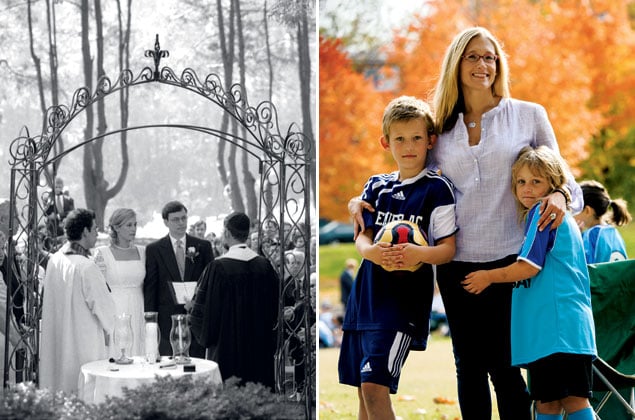
Julie Kluge yells up the stairs to her daughter: “Emilie, hurry up! Grandpa’s on the phone, and he’s in Kentucky!”
I look around the house. Pictures I took at Julie’s marriage to Robert Kluge on October 30, 1999—a wedding that, like Cat and Larry Pearce’s, took place at Woodend—sit in little frames on a ledge along the top of the family room. Bride and groom standing under wrought-iron chuppah. For years that picture hung on my wall, too, at the top of the stairs leading to my studio. The serenity it captured made it one of my favorites. Brides traipsing up those stairs to meet me would ask about that wrought-iron canopy, and I’d go back to my 1999 desk diary and dig out Julie’s contact information.
Hanging on another wall is Robert and Julie’s ketubah, a Jewish marriage contract. It reads, “And each said to each other: I promise to be your partner in the times of joy and in the times of trouble, to provide for and support you in trust and in love.”
Now, 13 years after the wedding, Bob has been gone for more years than the couple was married.
As Julie talks on the phone to her father-in-law, into the kitchen pops six-year-old Emilie, who—in pink shirt, pink headband, pink shorts, and pink socks over her soccer shin guards—looks like a deranged holdout from a 1988 Jane Fonda exercise video.
Her brother, Ethan, nine, is more reserved, with long eyelashes and a quiet intensity. He’s a talented athlete who happens to have an athletic-footwear fetish. “He’s the sneaker version of Imelda Marcos,” Julie says.
As the family’s nanny helps collect pieces of sports gear, Julie explains the plan for the afternoon: “Elvira’s taking Ethan to swim practice while I take Emilie to soccer, and then she’s going to take Ethan to his soccer practice and we’re going to meet them there. Does that sound good?”
It sounds good. A minute later, we’re piling into cars.
“I was nine weeks pregnant when he died. He knew that I was pregnant. But nobody else did.”
![]()
“My pictures always come to mind first,” Julie says as we sit in picnic chairs watching Emilie run around the field. “Well, what first comes to mind actually is what a beautiful day it was. It was the 30th of October, and it was 75 degrees and sunny. In fact, whenever my girlfriends call to wish me happy anniversary—because they always do—they say, ‘We remember what a beautiful day it was.’ ”
She met Bob in the early ’90s, when they were legal assistants at the law firm Kirkpatrick & Lockhart. As courtships go, theirs was long. “We met in ’92,” Julie says.
I remember she earlier described Bob as the kind of guy who would deliberate for six months before buying a $500 TV. “Wow,” I say, “so that’s seven years of—”
Julie finishes the thought, laughing: “Torture? Yeah, seriously. Everybody, including his parents, used to say, ‘Are you ever going to propose to her?’ ”
Julie and Robert married on that glorious day in October 1999. But for as long as their engagement was, it took only a few days for the roller coaster that would mark the next 5½ years to begin. Bob got sick on the honeymoon in Italy.
“At the time, we had no idea what it was, but when we were in Florence, he couldn’t leave the room. He was laid up with stomach cramps and nausea. We thought it was just some random virus. It lasted two or three days. So I saw Florence by myself.”
In the spring of 2000, Bob finally learned what had disrupted his honeymoon a year earlier. It’s called paroxysmal nocturnal hemoglobinuria—roughly translated, blood in the urine at night. Julie and Bob went to work finding a doctor, employing the same diligence used for television purchases. They settled on an expert at Johns Hopkins. But as months turned into years, the nausea attacks that had once been months apart came faster and faster.
“It sucked for him,” Julie says. “But had he continued to have just those attacks . . . .”
Eventually, other symptoms required a massive intervention. “We opted to have a bone-marrow transplant,” she says. “His liver was being destroyed.”
Two days after the transplant, and not quite six years after their wedding, Bob Kluge passed away. An infection had doomed the procedure, and sepsis spread fast. The following year, on March 1, 2006, his daughter, Emilie, was born.
“I was nine weeks pregnant with her when he died,” Julie says. “He knew that I was pregnant. But nobody else did.”
You want a happy story? I’ll give you a happy story—first because a glance at my spreadsheet tells me that most of my couples are still married, and second because this was the one I most associated with sadness.
I photographed Kara Simmons’s wedding to Brian Johnston two years after Cat and Larry got married. It was October 4, 2003. I remember only one photo I took that day. Kara is holding a picture of her mother taken on her mother’s wedding day. She’s holding the photo, which she would carry down the aisle minutes later, because her mother couldn’t be there with her. Couldn’t help put on her veil. Couldn’t whisper words of wisdom. Kara’s mother, Eva Walls, had died of breast cancer nine years earlier.
But my memory of Kara’s day isn’t Kara’s memory. I think of the picture because it speaks to me every time I look at it, but to Kara it’s just another blip. The photo hangs in my studio because of its inherent melancholy, but Kara is way beyond melancholy.
“I don’t think I could have imagined on October 4, 2003, how happy I would be nine years later,” she says, “how wonderfully life would turn out and what amazing things it would have in store.”
Like all brides, her recollection begins not with the forest but with the trees: “I remember that Robert De Niro was staying in the hotel. And that everybody kept coming up to me saying, ‘Did you see Robert De Niro? He’s at the hotel!’ And I kept thinking, “Enough about Robert De Niro! You should be asking about me! I’m the bride!”
At the very least, it would have been nice if one of these friends had gotten De Niro to sign her ketubah, she jokes. But what Kara truly remembers has nothing to do with Hollywood stars who happened to be staying at the Fairmont. “I remember the moment I entered the room and Brian had this look on his face,” she says. “This look of excitement and joy and love. And I remember I wanted to etch this moment and that look in my mind. Pure bliss. I get chills thinking back to that moment.
“I remember, of course, you taking the picture of me with the picture of my mom, and I remember feeling the loss and loneliness of not having her there. That moment when you were snapping that photo, I was thinking, ‘Hurry up, Matt, ’cause I can’t keep it together much longer.’ ”
A few minutes later, Kara was walking down the aisle with her mother’s photo. “What I thought was really touching was that even though my mom and dad had divorced and Mom had remarried, my dad showed me later that he had a picture of my mother in his jacket pocket, too. I was so grateful to him for knowing I needed that.”
Her son, Evan—named after his grandmother Eva—was born on July 20, 2010. “I’m always at a loss to describe him,” Kara says. “He’s amazing in a way that words don’t justify. All I want every day is to spend time with him and Brian.”
After a moment, she adds, “I wish I could go back and tell my 18-year-old self”—her age when her mom passed away—“that things would all be okay.”
It’s a common refrain for this attorney with the dream job, representing as counsel her beloved alma mater, the University of North Carolina at Chapel Hill, the school that provided her with comfort in the days and weeks following her mother’s death in 1994.
All she says is “I’m so fortunate. I’m so fortunate.”
Cree Pearce suffers from a rare genetic problem, so rare that only about 100 people worldwide have been diagnosed with it. Most children with the condition experience developmental delays, lack of language, some degree of autism, and seizures. Another disorder Cree has puts him at risk for tumors of the brain, spine, and acoustic nerve.
“It’s de novo,” Cat says. “The luck of the draw. It’s a genetic mutation but not hereditary. It happens during the first couple of weeks when the embryo is developing.”
Cree will need MRIs every year for the rest of his life, and he now has epilepsy. “They threw that in just for kicks,” his mother says.
“The important thing is to keep your sense of humor,” Cat says, her voice breaking. “It’s not easy. You never know what’s going to come—you never know what you’re going to get hit with next. But not for one minute would I trade anything we’ve been through for him. For as long as we have him, it’s a gift. And for all that he will go through, he teaches us every day that every little thing is a miracle.”
How far off does her wedding seem now?
“Eons. But you know something? Marrying Larry was one of the smartest things I’ve ever done. Seventeen years together and I’d do it all over again. The grove and the trees. The vows. It took me a year to write them, and they came out exactly the way I wanted.
As a nurse calls out for two more children (“Mario! Robert!”), Cat begins reciting those vows—words she probably hasn’t spoken since that morning in 2001.
You’re the center of my world and my best friend.
I know that every day we have together is a gift.
You are intelligent, creative, funny, and sweet.
Stubborn, frustrating, challenging.
You make me crazy and you make me laugh, normally at the same time.
I wouldn’t change that about you. You’re perfect for me.
I can’t promise you that our life together will be easy, that we won’t disagree or argue or feel like quitting sometimes.
But I know the best things in life aren’t easy.
And I know we have what it takes to make it work.
I do promise to share with you the best part of myself.
I will support you and believe in you . . . .
A nurse’s voice interrupts: “Pearce. Cree Pearce.”
“Well, that’s most of it anyway,” Cat says. “And look how accurate it was.”
A few minutes later, the family is inside the surgical unit. Larry makes a request of the doctors and nurses before he and Cat hand Cree over. “All I ask is that you take good care of him,” he says, leaving it to his wife to cut the tension.
“Promise me you won’t damage the one thing on his body that works perfectly,” she says.
“What’s that?” the doctor asks.
“His penis!”
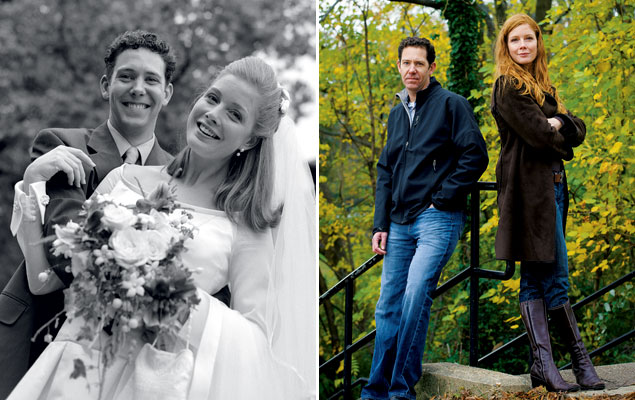
It was a Sunday—March 2, 2008—when Stephanie Roma-Brown, the bride who wore French cuffs, noticed that her husband seemed to be taking an awfully long shower. She was vacuuming, preparing for friends who were coming for brunch.
“I thought, ‘Dammit, why is he in the shower? I didn’t get to shower.’ ”
But annoyance turned to panic when she found Stewart in the bathroom, confused, wearing a shirt, no pants, and one sock. “He couldn’t stand up,” Stephanie says. “He was completely incoherent.”
At the hospital, the news wasn’t promising: “They found a big mass on the back of his head, and they said, ‘It’s either a tumor or an aneurysm. And we hope for your sake it’s a tumor.’ ” Stewart was sent to Washington Hospital Center for evaluation.
“The next morning was a Monday,” Stephanie recalls, “and they said, ‘We’ve gotten all the results. He has a brain aneurysm, and we’re going to operate tomorrow.’ ”
“There’s a 50-percent chance that he lives,” says Stephanie, tears streaming down her face. “They say, ‘We don’t usually allow children up here, but you should probably call them.’ I’ll never forget watching them walk down the hallway and leave. They may never see him again. I was okay for me, but they have no idea about the severity of this. They’re laughing. Daddy’s in a wheelchair. The doctors are like, ‘They have to leave now.’ ”
Everyone reacts to stress differently. Stephanie remembers thinking about the mundane.
“I had no idea who our mortgage was with, how much our mortgage was, where our savings accounts were. I knew nothing. Who our cable provider was. Nothing.”
The next morning, as her husband was being prepped, she recalls being bewildered by a haircut: “They were going to shave only half of it! And I was like, ‘If you’re gonna shave half his curly black hair, could you please just shave the other half? He’s gonna look ridiculous.’ ”
Stephanie can still remember the picture I took of her and her husband-to-be sitting in those big chairs on the altar at St. Ignatius, wearing that dress with the French cuffs. Stewart’s memory is pretty good, too, considering he’s survived an aneurysm. He wants to talk chairs, but for a moment I’m thrown off.
I ask what wedding photographs stand out. “The one of us up in the chairs,” he starts, but then I realize we’re talking about different chairs. “Whatever dance that was—the Jewish dance. I’m not Jewish, so I don’t know what it’s called—the hora? My Jewish buddies got us up in chairs. They lifted my parents up, her parents up. It was great. Awesome!”
I’m glad to hear such fond recollections. Like Stephanie, he can picture the photos in his head: one of him and his best friends doing shots of bourbon; one of Stephanie and her best friend, Michelle, and her sister, Nicole. “The one I really liked,” he says, “was us walking around the reflecting pool at Oxon Hill Manor.” I smile. I still can see myself running up this little hill to try and get the composition right on that.
I asked Stephanie whether things were great for a long time after her wedding, and she corrected me—she said things were good. Stewart’s assessment is more upbeat, though he acknowledges that things went south some time after their two boys started growing up. He and Stephanie officially separated on January 21, 2011.
“My aneurysm was in 2008. That was four years ago, eight years into our marriage. I think we were separating, going our own ways, growing apart. Once the kids were born and once they started getting a bit older, out of diapers, she just started looking for other things to do. I was more happy with the kids than with her. Being a dad was more fulfilling to me than being a husband.” He pauses. “This is all kind of retrospective.”
Stephanie told me basically the same thing. For her, the realization coincided with her husband’s surgery, that night when she should have been worrying about life and death but somehow ended up fixated on the revelation that her husband was a smoker: “ ‘A pack, pack and a half a day,’ ” she said. “I didn’t know that.”
“I don’t recall that,” Stewart says. “I don’t know what my answer was. I was smoking six months on, four months off, six months back on. She says she doesn’t recall ever noticing it on me, but that’s not true. Once every two months, she’d smell it on my breath and ask me if I smoked. And I’d always lie and say no. And then we’d move on.”
Does he see it as a metaphor as Stephanie does, a sign of increasing distance?
“We had grown apart. Did the aneurysm have something to do with it? I think that definitely had something to do with our separation. I had become more drawn away from things.”
“When you go in to see a marriage counselor,” Stephanie told me, “she says, ‘Take five minutes and write down what it is that attracted you to your mate, what made you fall in love, or what was really interesting.’ I wrote down things like he’s really different than me, he came from a different family, he grew up in a different way, and he lived all over the world. That he was sort of an enigma that I needed to figure out. That he went to boarding school and did all these things I never did. And he was cute and tall and had dark hair. That he was sweet and shy.
“So after she has you go through this exercise, the therapist says, ‘What’s the problem between you two?’ And everything you wrote down is the problem.”
As warning signs go, having one of your mother’s friends—whose husband had come out of the closet years earlier—whisper in your ear before your wedding, “Courtney, you know you’re marrying a gay man, right?” is up there.
On a brutally hot summer day nine years ago, I photographed Courtney Watson looking into an ornately framed mirror. Family tradition going back generations dictated that this photograph be made, even if it was a good deal stiffer than my documentary sensibility preferred. But I was happy to oblige. Courtney, the bride, was so easygoing about everything else.
“I must have been in denial—he courted me in a way only a fabulous gay man could. ”
![]()
I hadn’t thought much about Courtney or her wedding until recently, when an e-mail popped into my in-box, a request for a family portrait. “You photographed my wedding in 2003,” she wrote. “They are the most beautiful photos, and I love them. My ex came out of the closet to me a few years back, and sadly all the beautiful photos came down off the walls of my family’s homes.”
Courtney Watson now knows she spent the first few years of her marriage sleepwalking past the signs others were seeing. That friend who pulled her aside on her wedding day? Courtney laughed the comment off. “Oh, no, we get that a lot,” she told her.
“Stephen and I were never legally married,” she tells me when we connect by phone a few weeks after her e-mail.
Seconds ago, she was talking about the joy of seeing her husband finally get to be the center of attention on their wedding day (“I don’t think I’d ever seen Stephen so happy—it was so great to see the day dawn on him”) and the hysterics of almost exposing her breast during the processional when she had a wardrobe malfunction.
“Wait,” I say. “Go back. You guys didn’t actually . . . get married?”
In the 14 years since I began shooting weddings, couples occasionally have told me after the fact that they’d gotten married at the courthouse a week or two before, or sometimes after, the actual event, usually due to some logistical matter. But I’m not sure anyone has ever told me the wedding I shot never turned into a marriage.
Either way, the issue gets trumped quickly.
Stephen Miller and Courtney Watson—their names and some other details have been changed for this article—met in 1999 on a group date at a diner. They instantly bonded and became best friends. “He was beautifully dressed,” says Courtney. “He was talking about how Frank Sinatra was his favorite, about black-and-white films. I must have been in denial—he courted me in a way that only a fabulous gay man could.”
Four years later, the two decided to tie the knot. Kind of.
“I sort of view marriage as this insane declaration that people make. Two people in love is an insane state of affairs—then declaring in front of everyone that you’re going to remain in that insane, impeccable, one-love state for the rest of your life.”
Courtney thought of her mother, who didn’t have the option in 2003 of doing what her daughter was about to do.
“My mom is gay. Stephen and I didn’t sign the legal document because my mom couldn’t get married to the person who was her partner. It was almost an act of defiance. I view her commitment as no different from what our commitment would be: We’re a couple and we’re committed to each other and that’s it.”
Getting married also would have jeopardized Courtney’s student loans. So she and Stephen decided not to sign on the dotted line.
“But we had already set the ball rolling on the party. I didn’t really care about the paperwork part—it’s the declaration.”
And have a party they did. Stephen got to be the star, their families had fun, and two of their friends became engaged at the reception. But like Stephanie and Stewart Brown, they got tripped up by one little detail.
Or two.
Courtney’s e-mail had already tipped me off that she was now living overseas with another man.
“Stephen and I weren’t legally married,” she tells me. “Thank God! We had our ceremony in 2003, but we never had a defined ending. It wasn’t until 2009 that we finally decided we had to declare publicly that we weren’t together.”
And why did you finally have to do that?
“Because I was pregnant with my current husband’s baby,” Courtney says, laughing. “We had a timeline that was no longer going to work with the rest of the world for Stephen to come out on his own terms.”
Courtney Watson was at first relieved to discover that her husband wasn’t obsessed with sex. But as time went on, “not obsessed” turned into not interested, which turned into anxiety attacks when the topic was even broached.
“I thought, ‘Oh, he’s being respectful.’ And after a few months, I started asking him, “How come you’re not voraciously after me?’ And he said, ‘You know, I’ve definitely had this problem in a few of my previous relationships. I think it’s because I’m from such a religious family.’
“His family literally speaks in tongues and dances with snakes. They’re serious about their Christianity, and being gay was not an option. And me, coming from a very not-religious family, I just accepted that was what was going on for him.”
But Courtney eventually put two and two together. “It was the most slow-dawning process on the planet. I’m a pretty intelligent person in some ways, but you would think I was next to brain-dead in this situation. I was so close to the situation, and I didn’t want to see.”
Still, Courtney was not ready to give up. “Everything else worked. He was still my best friend—so generous, so thoughtful.
“We just had that gay problem. My best friend is gay, my mom is gay, I am surrounded by the gay community. And I began to wonder if that was part of his choosing of me.”
Around 2007, as Courtney pushed her husband toward therapy, he pushed back in another direction.
“Find a lover, find a lover,” he told his wife.
For Courtney it was a nonstarter. “I’m not the kind of person who can really do that,” she says. “It’s just not the way I was built.”
In what would amount to an intermediate step, Courtney began chatting with people online. Discussion forums about cats led to discussion groups about cheap travel. And that’s how she found Alberto, who lived in Italy.
“Before I ever flirted with Alberto, I had a discussion with Stephen and I said, ‘I’d love to start with this person.’ And Stephen was very enthusiastic about it. It was a way for him to be off the hook.”
That’s how Courtney Watson—whose wedding to Stephen Miller I photographed back in 2003—ended up moving to a far-off land, remarrying, and having a baby girl, whom she named Alessandra. Yet she still didn’t give up on the man she had spent the last eight years with.
“I was living in Italy, and Stephen was really excited about Alessandra being born. He was looking to be a parenting figure in her life. We got a house, and it had a bedroom just for Stephen.
Courtney got a call from Stephen. “I need you, Courtney,” he cried. “Come home.”
![]()
“I had my husband, and I had my gay husband. I loved Stephen. I do love him—I always will. As far as Alberto and I were concerned, Stephen was family and we were going to be there for him. He was on the precipice of this life-changing declaration and discovery, and there was nobody in his life to support him through it.”
When Alessandra was around five months old, Courtney and Alberto, now settled in Italy, got a call from Stephen. He was sobbing. “I need you, Courtney,” he cried. “I need you to come home.”
“It was like a chant,” she recalls. “ ‘I’d rather be dead than gay. Help me, Courtney. I think I’m gay. Oh, God, what if I’m gay?’ He cried for half an hour. ‘Please don’t let me be gay, please don’t let me be gay.’ We cried together.”
Courtney and Alberto scraped together the money to fly back to America. Finally, after all these years, she would get the closure she sought. And Stephen would get the freedom he needed.
At least that’s what she thought.
In the days before Courtney’s trip home, the first since she’d remarried, Stephen continued to seek her help. “I’m terrified,” he told her. “All I do is fantasize about men.”
Stephen also hinted that he’d been spending time with an old friend of Courtney’s, a straight woman. “She’s really great,” he said. “And I sorta told her what was going on.”
At first Courtney was relieved: “I’m thrilled that he told somebody else as a support.” But when Stephen added, “I told her I sorta might be bisexual,” Courtney called him on it: “I said, ‘But Stephen, you’re not. Every relationship you’ve ever had with a woman ended because you’re not into that.’
“And he said, ‘But if I get it right this time, if I really, really try harder this time, maybe I can hide for another ten years, maybe for the rest of my life.’ ”
Courtney was irate: “Stephen, you can’t do that to her! She’s a good person. And you can’t do that to yourself. He said, ‘I know—I’m just really glad you’re coming.’ I thought that was the end of it.”
So they flew back to America: the wife who never was but who never stopped caring, the new Italian husband whom Stephen had encouraged Courtney to flirt with in the first place, and their five-month-old daughter.
But when they arrived, expecting to help Stephen through the process of coming out, he was nowhere to be found.
“He disappeared for three weeks,” Courtney says. “He doesn’t answer his phone. And I go to a party to see everyone and say, ‘Yay, here’s our new baby, here’s my new husband,’ and everyone is really weird about it.”
Stephen was supposed to be the one to explain to their family and friends why Courtney had left him, moved to Italy, and remarried—to tell everyone that he had encouraged her new relationship because he was gay.
But he hadn’t said anything.
“I kept my mouth shut for too long,” Courtney says. “I looked like I really wronged him. I looked like I just up and left the best man in the world.”
I have one question, I tell Courtney. The woman he said he had been spending time with—is she the woman he’s now dating?
“That’s the woman he’s now married to.”
“I can’t imagine ever doing it the same way,” Stephanie Roma-Brown is telling me. “I can’t imagine asking all my same friends to come together to watch me profess my love for someone the same way. I’ve already done that, and unfortunately it didn’t work out. I’m sure I wouldn’t rush right back into marriage, but I would want some sort of commitment from the other person. I don’t know how you work that out. Maybe there’s a simple way—it’s words and it’s a certain kind of love, but I can just never see myself sending out invitations to a wedding in the same way I did when I was 29.
“Maybe you hire a personal chef and everybody’s in your house and they’re in their socks and you’re having great wine. And he sits at one end of the table and you sit at the other and you stand up and you thank everyone for coming and you say this is a special night because XYZ. Or maybe it’s on the beach and everyone’s been swimming all day and you’re sandy and salty and you have somebody bring up a cooler of drinks, and you just sort of sit there and look across at each other. It doesn’t have to be all dressed up.
“You want to know what’s amazing?” Stephanie says. “How much you love someone and talk about things like how you’re going to raise your kids and how we’re going to spend the rest of our lives together. And which silverware we’re going to buy and what dinners we’re going to cook together and where we’re going to travel. And then you can end up really disliking them so much and having such strong feelings that are completely opposite.
“Then you step back when the anger sort of settles down and you say, ‘Okay, I love this person—I probably still do love him in some sort of way, and we have these beautiful children together and we’re going to be together forever.’ There hasn’t been one day since Stewart and I were separated that we haven’t talked. E-mails, cell phone, texting, telephone. There’s no losing this person—they’re there with you forever. However lightly or seriously you took the decision to marry that person, it is forever.”
A few weeks later, I ask Stewart if he feels the same way. “Now’s probably not a great time to ask me that,” he says. “When did you talk to her—a couple of weeks ago, right? Basically things have gotten pretty ugly now. We still e-mail about the kids, but we don’t talk anymore.
“We saw each other at the swim meet last night, and we didn’t say a word to each other. Right now I don’t really want to say anything to her.”
“Both of them were like therapy for me,” Julie Kluge says of her two children. We’re now watching Ethan’s soccer practice, an hour and a park removed from his sister’s. “They were the only way to get past all of it. They don’t let you feel bad for yourself when you want to.
“Emilie was a gift from God. She never even knew him, but she’s a continuation of him. She has no idea who he is other than what she hears from me and the rest of her family. She’s like—him. That’s what I have left.”
For Ethan it’s more complicated.
“He remembers a little bit. He’ll say, ‘If Dad was here, he would be my soccer coach, right? If Dad was here, he’d throw balls to me and swim with me in the pool, right?’ If you say to him, ‘Boy, you don’t miss a bit, Ethan—you can hear things from a mile away,’ he’ll say, ‘Oh, well, I get that from my dad.’ ”
Do they ever ask to see pictures?
“Ethan asks more than Emilie, because he’s a boy or he’s older or he knows him in some way. There seems to be a bigger void for him. He constantly tries to find connections, always trying to find a link back.”
Of course, Ethan has soccer. “Soccer was Bob’s thing,” Julie says. “He would watch any game—he’d go to Europe to watch games. He was one of those freaky people who, before it was even popular here, would go find these bizarre places to watch European soccer games.”
Though it’s taken some time, her attention has slowly turned back toward her own needs.
“It’s not easy,” she says. “When you date someone when you’re 42, you’re not really as flexible as you were when you were 22. You know what you like and what you don’t. I’m not willing to take ‘He’s good enough.’
“I’m just hoping, basically, that someone’s going to fall from the sky. And land in front of me. Or on top of me. Or on top of my car. But so far that hasn’t happened.”
Ethan’s practice is over. Even from afar, he looks dejected.
Julie Kluge walks out to meet her son as Emilie dances not far behind. Ethan, certain the coach disallowed a goal to even things out a bit among the less skilled players, is on the verge of tears. He walks slowly, his mother’s arm around him.
“Eeth, ya gotta shake these things off,” Julie says as we hop into their SUV and head to dinner. “There are going to be lots more disappointments.”
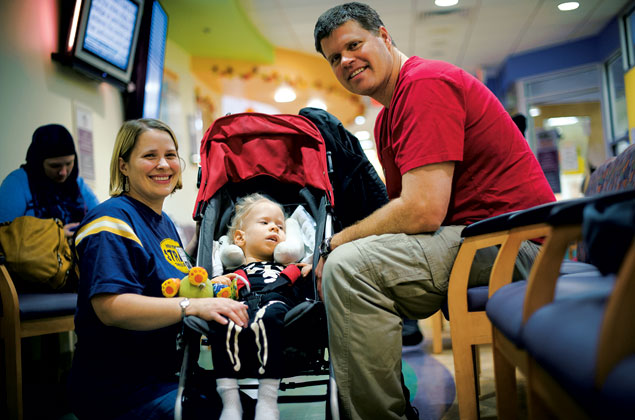
What exactly remains after a wedding?
For eight hours, a shutter opens and closes, one-125ths of a second by the boatload. Five thousand images by the end of one night. And after the blurry pictures, the ones with people with their eyes closed, and the repetitious frames are weeded out, perhaps 1,200 pictures remain. The client comes in and chooses pictures for an album, 65 from the original 5,000. An album gets produced, along with a few five-by-sevens to be put in frames. And the album sits on the coffee table for a few years until it gets moved to the bookshelf, then into a drawer. Maybe a five-by-seven stays on the mantle.
For Julie Kluge, what remains is a framed butterfly on the wall, a ketubah, some photographs, and two beautiful children.
“When Bob died,” she says, “it was before we put on the addition. We had this porch on the side, and there was a butterfly that came in the porch. It wouldn’t leave. We tried to shoo it out—it came back. We got it out, and it came back. It eventually died on the porch that night. We found it there the next day.
“I don’t know if you noticed—it’s the framed butterfly in the kitchen. I was convinced that it was Bob. He didn’t want to go, and he came back here to die. And now I see butterflies around my kids all the time. It might be my own little craziness. Last week, I was at the zoo with the third-graders from Claremont Elementary, and we went into the butterfly exhibit. Two butterflies landed on Ethan’s head. Not one other kid or adult in the place but Ethan. And I was like, ‘I’ll bet that’s your dad.’ ”
Kara Simmons—the bride who carried a picture of her mother at her wedding—and Brian Johnston recently celebrated their ninth wedding anniversary on St. John, with their two-year-old in tow.
“We’ve traveled all around the world,” Kara told me over e-mail. “You have these little ways in which you know you and your spouse are soul mates. St. John is like that for us. We’ve been to Australia, Hawaii, and Fiji, but St. John has the most beautiful beaches. It’s like a spiritual awakening.
“To see Brian lying in the sand reading a car magazine with Evan on his back. It was perfect.”
For Courtney Watson, the last straw was watching Stephen conceal his sexual identity to a new woman. Courtney finally cut things off with him. He had set her up, making it look like she had abandoned him by running off to another country and getting married and pregnant, when he had engineered it all from the beginning. Yet she has few regrets.
“I would do it again,” she says. “He was so happy. He was so happy. I still smile when I think about how he got to be the superstar of the day. I know it’s usually the bride that gets to be the star, but I was married to a fabulous gay man.”
Stewart Brown and Stephanie Roma-Brown are finalizing their divorce. During a recent fight, Stewart took the three large framed wedding pictures hanging in their house, carried them to the garage, and smashed them. “Don’t take offense,” he e-mailed me. “It was nothing personal against you or your photos. They were great, hence why they were hanging up in our hallway. But it gets a bit difficult to see these pictures every day of us back in our happier days.
“You had asked what we remembered about our wedding day, and one other thing I’ll never forget is when Steph started laughing while saying her vows. While it was funny and cute at the time, in hindsight I should have seen it as a premonition for what would become of our marriage.”
For Cat Valcourt, what remains goes like this, an e-mail she sent me recently: “Joined an NF2 [neurofibromatosis type 2] group yesterday—it scares the hell out of me. Did you know the average life span of NF2 individuals has been about 15 years from diagnosis? My son was diagnosed at 32 days. I am so angry, and I don’t know at whom. My Cree has been given a death sentence, and there is nothing I can do except make his time on earth happy.
“It will pass. It’s just the first time I have understood how finite his life is. I have been grieving since yesterday, crying on and off. Once I finish my pity party, I can get myself together and focus on what’s really important.
“Living.”
A few weeks later, I’m sitting in the presurgical waiting room at Children’s National Medical Center again. Cree is here for surgery to biopsy tumors near his ribs.
Cat looks at Larry and laughs: “Should we tell him?”
“Tell him what?” I say. Then I remember she recently told me she was going in to have frozen embryos implanted.
“We haven’t told anyone!” Cat says, grinning. “You can’t live life based around sickness.” She’s having twins.
A few months ago, on a humid summer afternoon, I was walking back to my car after shooting a family portrait in the Bishop’s Garden next to Washington National Cathedral. Passing the gazebo, I heard something familiar: vows being recited. I peeked in and, sure enough, there was a wedding—a couple, an officiant, a few friends and family. No photographer. I wanted to keep walking, to get into my air-conditioned car and go home, but I couldn’t.
Claire Rose married Damon Bowe that day in a vintage dress she’d bought on eBay. She held flowers bought at the stand near her office. The officiant came courtesy of Craigslist.
As they finished and their friends clapped and Claire and Damon kissed, I did what I’ve done for 14 years—took pictures of a bride and groom. “This is your lucky freebie night,” I said, laughing at them, laughing at myself.
“We know that we love each other and want to spend the rest of our lives together,” Claire wrote me a few days later. “So what’s the importance of the food that you eat for dinner on that night or the color of the tablecloths that you eat the food on?”
She didn’t mention the photography part, but it was okay. Later that evening, I sat at my kitchen table and e-mailed the newlyweds a few photographs. A hundred years from now, I hope someone will still be looking at them.
Matt Mendelsohn (matt@mattmendelsohn.com) is a photographer and writer in Arlington.
This article appears in the December 2012 issue of The Washingtonian.

